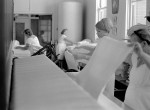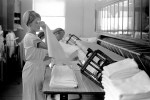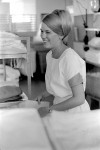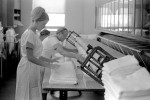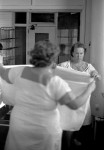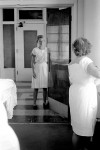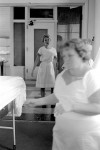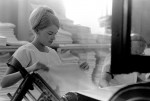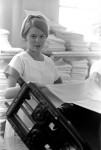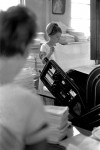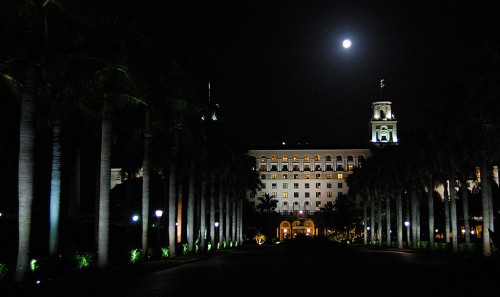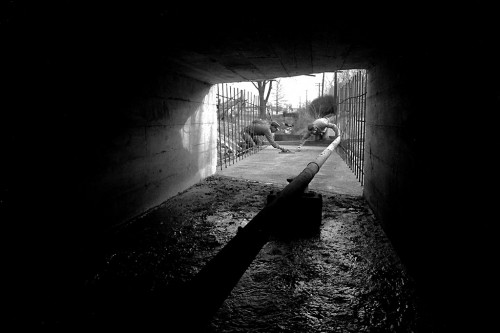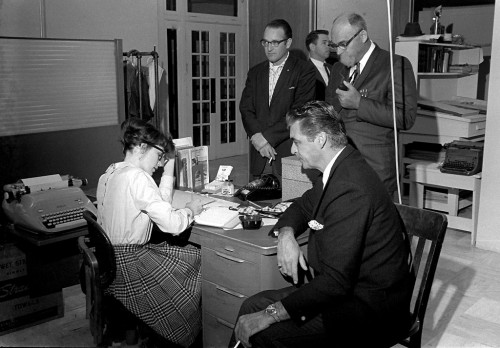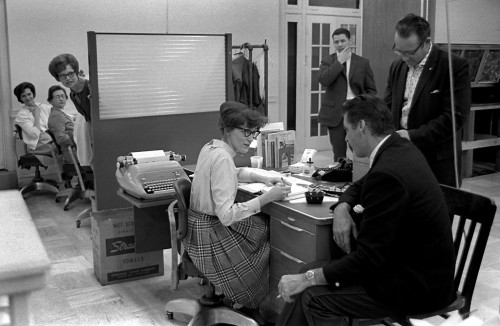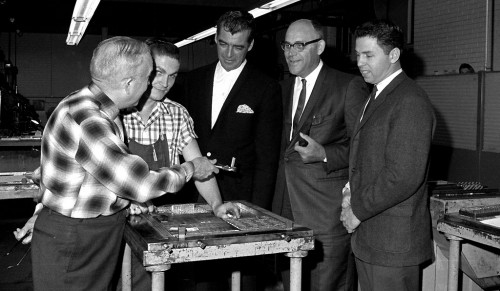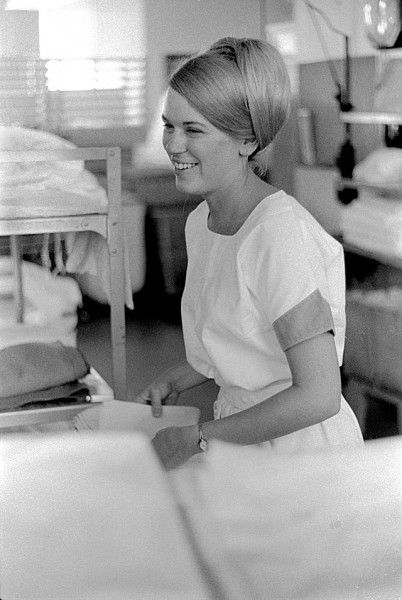 Don’t let that sweet, innocent smile fool you. Patricia Foster was a real mangler. No, she didn’t wrestle, nor was she a roller derby queen, but she was a mangler in 1967 all the same.
Don’t let that sweet, innocent smile fool you. Patricia Foster was a real mangler. No, she didn’t wrestle, nor was she a roller derby queen, but she was a mangler in 1967 all the same.
St. Francis Hospital laundry
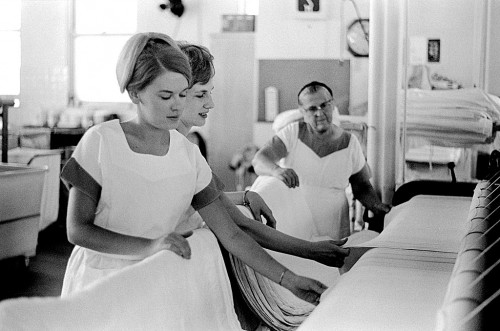 Instead of taking the summer off, Patricia decided to work in the St. Francis Hospital laundry before starting her freshman year of college at SEMO. Her duties included running the dried linen and clothing through the “mangle,” a big ironer, sorting material and folding mountains of sheets, she told The Missourian’s September 2, 1967, Youth Page.
Instead of taking the summer off, Patricia decided to work in the St. Francis Hospital laundry before starting her freshman year of college at SEMO. Her duties included running the dried linen and clothing through the “mangle,” a big ironer, sorting material and folding mountains of sheets, she told The Missourian’s September 2, 1967, Youth Page.
(Actually, I think she told it to me. The story’s not bylined, but I recognize my style. I generally figured other people could tell the story better than I could, so most of my writing consisted of lots of quotes with a few transitions stuck in between.)
Work was monotonous
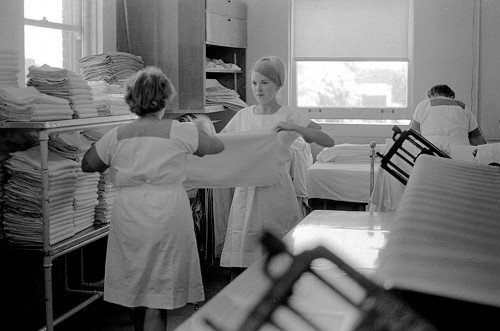 The work was monotonous, she said. “A lot of my friends said I was foolish to go to work in the summer instead of to school, but I figured that this was as good an education as I could get. Learning about people, I mean.”
The work was monotonous, she said. “A lot of my friends said I was foolish to go to work in the summer instead of to school, but I figured that this was as good an education as I could get. Learning about people, I mean.”
Patricia was the daughter of Mr. and Mrs. Ernest Foster, 1625 Bloomfield. The story doesn’t mention which high school she attended.
Didn’t have to handle “wet wash”
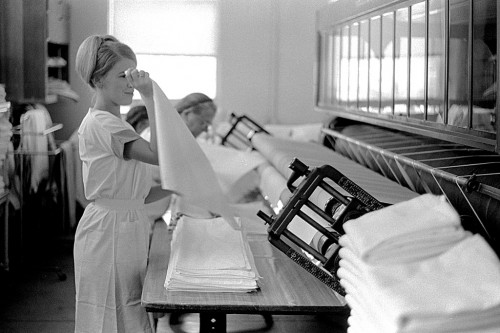 “Once I got to know everybody, it wasn’t as bad as I had anticipated,” she said. “We didn’t have to handle the ‘wet wash’ – stuff that comes straight from the floors.” The routine nature of the work made it easy to slip into daydreaming, she observed.
“Once I got to know everybody, it wasn’t as bad as I had anticipated,” she said. “We didn’t have to handle the ‘wet wash’ – stuff that comes straight from the floors.” The routine nature of the work made it easy to slip into daydreaming, she observed.
Singing made the time pass
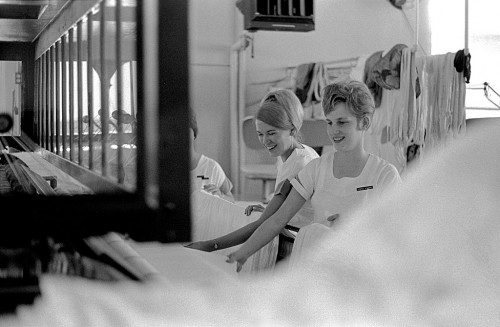 Good-natured give-and-take between the workers and singing helped make time on the job pass quickly.
Good-natured give-and-take between the workers and singing helped make time on the job pass quickly.
“My specialty was singing,” she said. “We couldn’t have music, so we made our own music.
Photo Gallery from St. Francis Laundry
I’m going to include a gallery because some of the photos show other workers in the background. Some of the pictures show other angles of the laundry area that might mean something to someone who worked there. Click on any image to make it larger, then click on the left or right side to move through the gallery.

